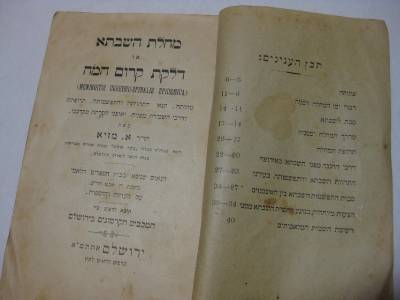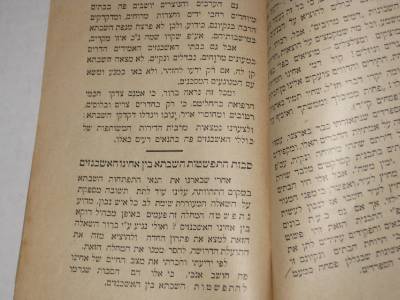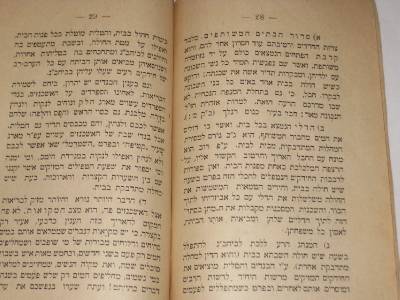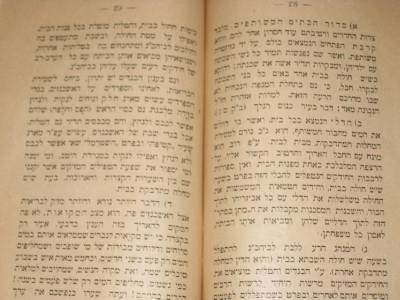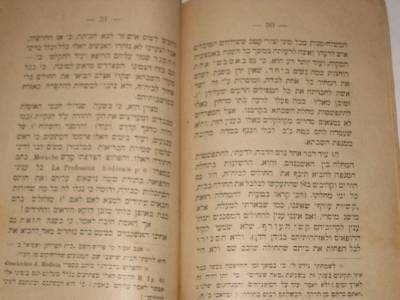As is well known, in the early 20th century, the various Syrian Jewish communities in the World, including that in Argentina and New York, accepted a controversial community ban against the acceptance of any converts. This ban is still in effect today and has been re-enacted several times in the years since.
In 2007, the NYT published an article on the subject, which prompted the following response by Rabbi Moshe Shamah, a Syrian Jewish Community Rabbi in NY:
Letters to the Editor, Magazine The New York Times 620 Eighth Ave. New York, NY 10018
To the Editor,
Jakie Kassin is the son and grandson of rabbis and a dynamic do-gooder, but he is neither a rabbi nor a scholar of Judaic studies. The statements attributed to him in “The SY Empire” (Zev Chafets, Oct. 14, 2007) are a gross distortion of Judaism as well as of the 1935 Edict promulgated in the Syrian Jewish community of Brooklyn. That Edict was enacted to discourage community members from intermarrying with non-Jews. It acknowledged the reality of the time that conversions were being employed insincerely and superficially. Accordingly, conversion for marriage to a member of the community was automatically rejected.
However, it is important in this regard to clarify the policy of the community rabbinate and particularly that of the long-time former chief rabbi of the community, Jacob S. Kassin (the originator of the Edict), and his son, the present chief rabbi, Saul J. Kassin. I quote from an official formulation of the Sephardic Rabbinical Council of several years ago that reflects their position:
“1. A conversion not associated with marriage that was performed by a recognized Orthodox court – such as for adoption of infants or in the case of an individual sincerely choosing to be Jewish – is accepted in our community.
2. If an individual not born to a member of our community had converted to Judaism under the aegis of an Orthodox court, and was observant of Jewish Law, married a Jew/Jewess who was not and had not been a member of our community, their children are permitted to marry into our community.”
Based on these standards a goodly number of converts have been accepted into the community. Genetic characteristics play no role whatsoever.
No rabbi considers sincere and proper conversions “fictitious and valueless.” (The comma in the English translation cited in the article that gives that impression was the result of a mistranslation by a layman, a matter I made clear to Mr. Chafets when we spoke.)
In addition, the quote claiming that even other Jews are disqualified from marrying into the community “if someone in their line was married by a Reform or Conservative rabbi” is a totally false portrayal of community rabbinical policy. Many Ashkenazim whose parents were married by such rabbis have married into our community.
Sincerely,
Moshe Shamah Rabbi, Sephardic Synagogue 511 Ave. R
Brooklyn, NY 11223
I found though a document which appears to show that 3 Syrian Rabbis in 1973, didn't seem to be bothered by all this and accepted a convert from Argentina, as testified by the document below. The 3 Rabbis who signed are Rabbi Avraham Rafoul, Rabbi Nissim Anteby and Rabbi Netanel Haboba.
 in the book
in the book  (ed. Venice, 1545, § 86), where the cutting of the hair is referred to. Hence he read
(ed. Venice, 1545, § 86), where the cutting of the hair is referred to. Hence he read  and took it to mean a cleric (
and took it to mean a cleric ( ). In the book
). In the book (ed. Venice, 1546) the same censor strikes out the first words in
(ed. Venice, 1546) the same censor strikes out the first words in , ("He who bathes while he holds an insect in his hand,") which he here connected with Christian baptism. "
, ("He who bathes while he holds an insect in his hand,") which he here connected with Christian baptism. "








